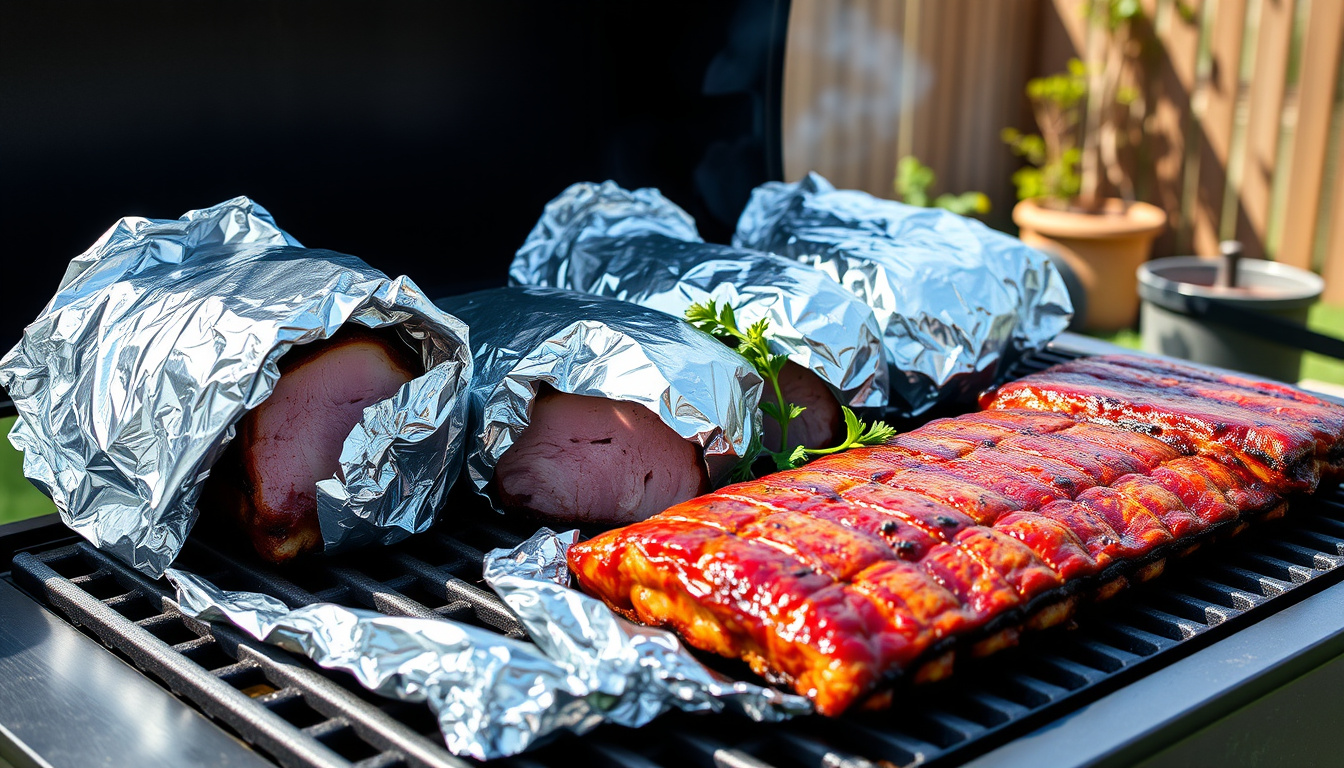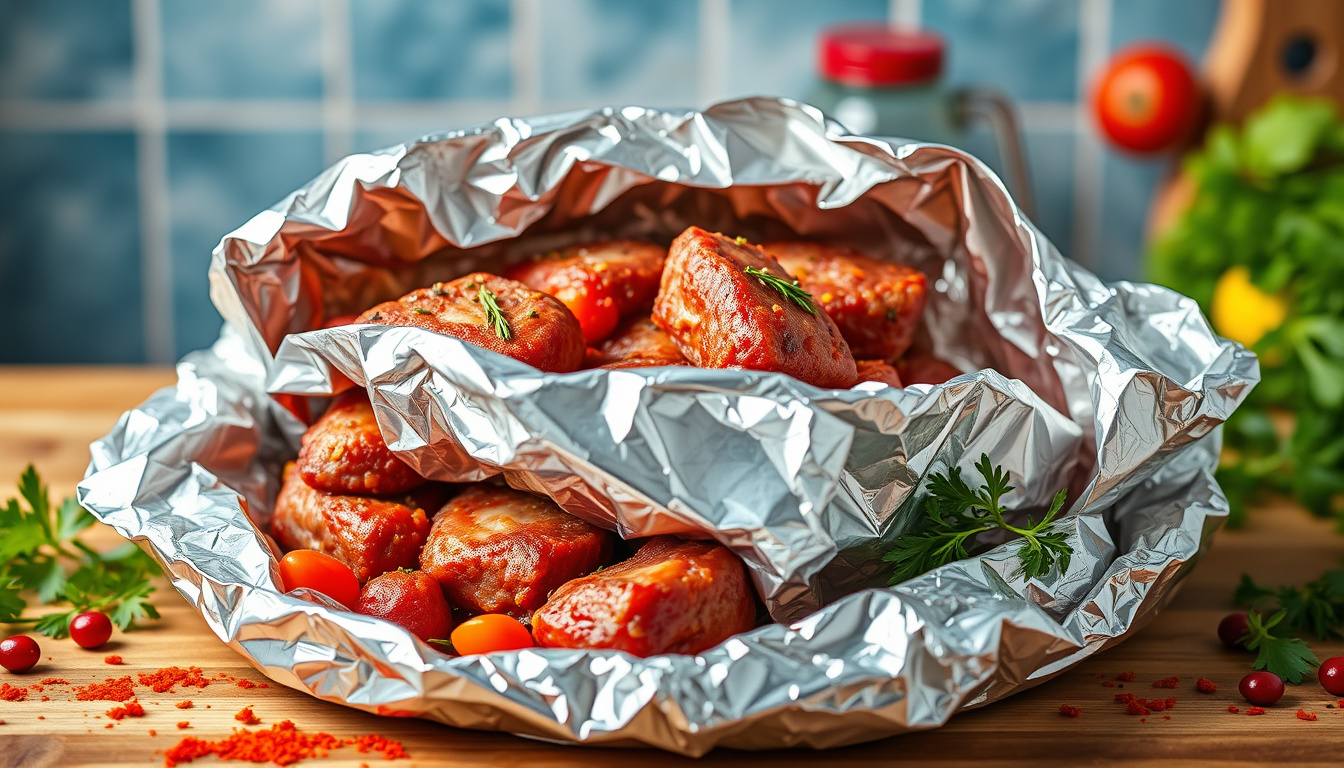When it comes to cooking meats, whether for a backyard barbecue or a cozy family dinner, the technique of wrapping meat tightly in foil is one of the most effective methods to ensure tenderness, moisture retention, and enhanced flavor. This technique, often referred to as the “Texas Crutch,” has been embraced by both amateur cooks and seasoned pitmasters alike. Here’s how to master this skill, along with the reasons behind its effectiveness.

What Is The “Texas Crutch”?
The term “Texas Crutch” refers to a method of wrapping meat tightly in aluminum foil or butcher paper during the latter stages of cooking. Primarily utilized in smoking briskets, pork butts, and ribs, this technique helps to create a steamy environment that keeps the meat moist while simultaneously speeding up the cooking process. The crutch allows for the meat to braise in its own juices, yielding a tender, juicy result.
Benefits of Wrapping Meats in Foil
Retaining Moisture
One of the primary advantages of foil-wrapping is moisture retention. When meat is sealed in foil, it prevents evaporation, which can dry out the exterior. The trapped juices mix with any additional liquid (such as apple juice, beer, or broth) you choose to add, enhancing flavor and tenderness.
Cooking Efficiency
Wrapping meat can significantly decrease cooking time. The foil acts as an insulator, allowing heat to penetrate the meat more effectively than air would, thus accelerating the cooking process. This is particularly beneficial during the “stall” phase—when the meat’s internal temperature struggles to rise due to moisture loss.
Enhanced Flavor
The steam created inside the foil-pack allows flavors to penetrate the meat more deeply. Whether you’re using a marinade or adding spices, wrapping in foil integrates those flavors more effectively than traditional cooking methods.
How to Wrap Meat in Foil Properly
Preparation
-
Choose Your Foil: Use heavy-duty aluminum foil that won’t tear easily. Alternatively, pink butcher paper can also be used, which allows for some breathability while still retaining moisture.
-
Prepare Meat: Season your meat as desired, and consider spritzing it with a little liquid (like apple juice) to add moisture.
Wrapping Technique
-
Layer the Foil: Use two sheets of aluminum foil, arranging them to create a cross shape. The sheets should overlap in the center with enough extra material on the edges to seal tightly.
-
Position the Meat: Place the meat in the center of the foil. If using liquids, add them around the meat before wrapping.
-
Seal Tightly: Fold the foil over the meat, ensuring no open seams where steam can escape. The wrap should conform snugly to the meat to keep the juices sealed inside.
-
Return to Heat: Place the foil-wrapped meat back onto your grill or in your oven to finish cooking. Monitor the internal temperature closely to avoid overcooking.
Tips for Success
-
Timing is Key: Knowing when to wrap your meat is crucial. Many pitmasters suggest wrapping when the meat hits around 150°F (65°C) and has developed a nice color.
-
Avoid Overdoing It: Too long in the wrap can lead to mushiness. For ribs, a shorter cooking time in the foil (around 30 to 60 minutes) is often recommended, whereas briskets may need longer (up to two hours).
-
Rest After Cooking: Once you remove the wrapped meat, allow it to rest for a few minutes. This helps redistribute the juices throughout the meat, enhancing flavor and texture.
Common Mistakes to Avoid
-
Using Inadequate Foil: Thin foil can tear and lead to leaking, which negates the benefits of wrapping.
-
Overloading with Liquids: Too much liquid inside the wrap might create a soggy texture. A quarter cup or so is generally sufficient.
-
Opening Too Soon: Peeking too often disrupts the cooking environment. Once wrapped, resist the urge to check until it’s time to remove the meat.
Conclusion
Mastering the art of wrapping meats tightly in foil can elevate your cooking game significantly. By understanding its benefits and perfecting the technique, you can achieve tender, juicy results that will impress family and friends alike. Whether you’re preparing brisket, pork butt, or ribs, employing this method will undoubtedly enhance your culinary creations, making every meal a memorable experience. So, preheat that grill, grab your foil, and get ready to enjoy some deliciously wrapped meats!
>> Chest Freezer Reviews <<
>> Upright Freezer Reviews <<

